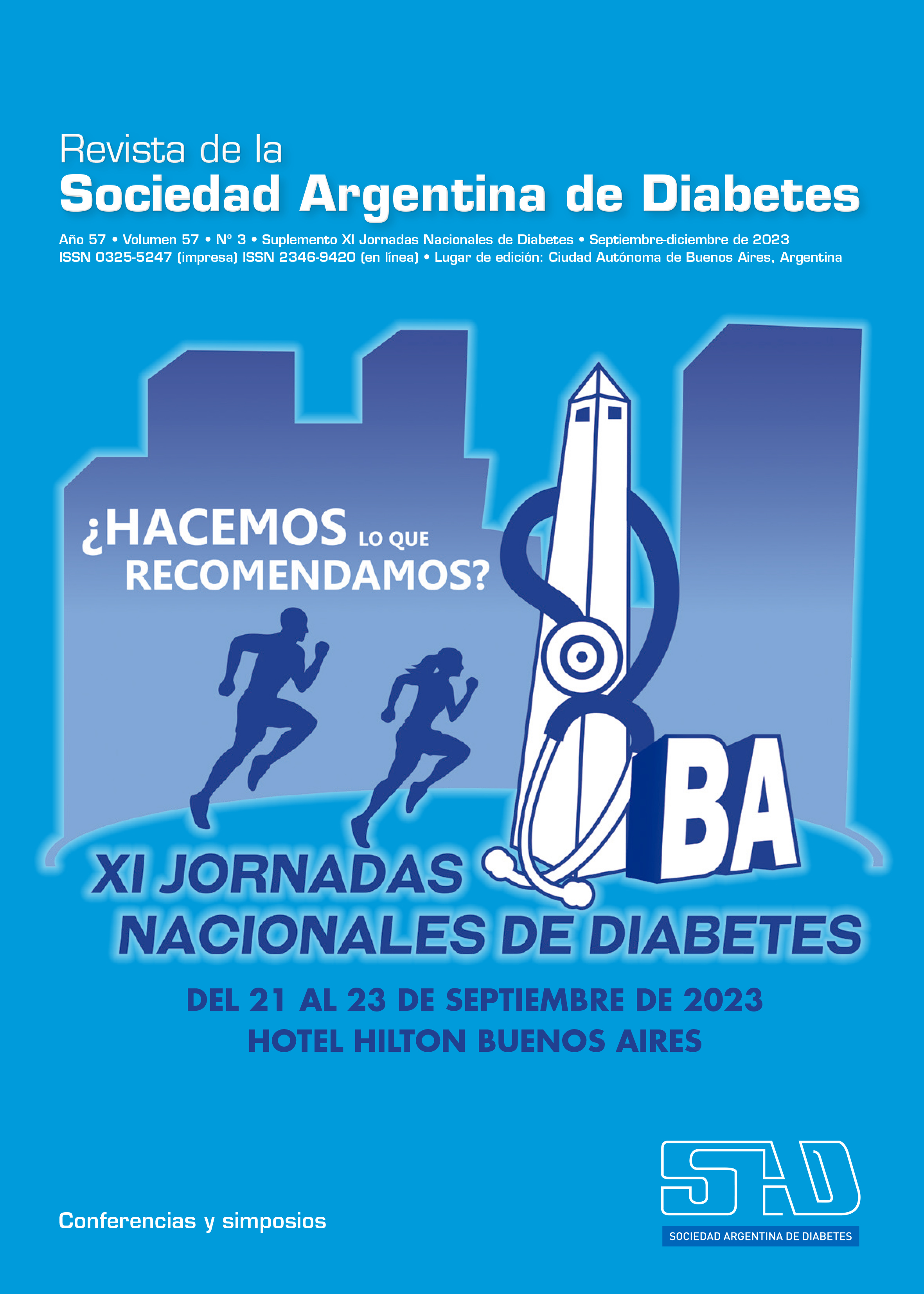Psychosocial aspect: how to avoid burnout syndrome
DOI:
https://doi.org/10.47196/diab.v57i3Sup.691Keywords:
burnout, preventionAbstract
The National Survey of diabetologists carried out by the Psychosocial Aspects Committee in 2014 showed that more than 20% of the professionals presented clear signs of suffering from Professional Burnout Syndrome (SDP) and 15% remained in a borderline situation of suffering from the syndrome. The pattern found shows us that the most affected are those who work in public hospitals, feel poorly paid and have administrative overload. SDP is associated with a lower quality of patient care and a lack of commitment to medical practice. It is important to think about strategies to reduce professional burnout in health centers in order to avoid the deterioration of the psychophysical health of professionals and prevent the loss of efficiency in patient care.
The prevention of physical and emotional exhaustion of health professionals must focus in two directions.
- In relation to the health organization
- Reduction of risk factors in the work environment: control excessive work overload.
- Recognition of Burnout: application of the Maslach Burnout Inventory (MBI) at least once a year, in the pre-holiday control.
- Design time at work for relaxation activities.
- Communication: provide training in communication skills and conflict management.
- In relation to groups of professionals and the professional as an individual.
- Creation of work teams: promote care among professionals.
- Learning skills to speak-listen.
Difficulty in helping mode
- Give or offer what is not available. Solution: consultation and referral.
- Help beyond the circumstances and will of the person. Giving beyond what the other needs, wears out. Solution: respect the decisions of individuals.
- Paternalistic doctor-patient relationship. Solution: promote adult relationship.
- Relate to a prejudice in advance, which determines a difficult relationship with few results. Solution: listen without judgement. Be present.
Self knowledge
- Communication difficulty: difficulty saying “no” and making effective requests.
- Lack of discernment between opinions and facts.
- Difficulty incorporating good eating, sleeping and regular exercise habits.
- Difficulty letting go of ideas of perfection.
References
I. Carrillo-Esper R, Gómez-Hernández K, Espinoza de los Monteros-Estrada I. Síndrome de burnout en la práctica médica. Med Int Mex 2012;28(6):579-584.
II. Shanafelt T, Sloan T. The wellbeing of physicians. Am J Med 2003;114:513-519.
III. Escribà-Agüir V, Artazcoz L, Pérez-Hoyos S. Efecto del ambiente psicosocial y de la satisfacción laboral en el síndrome de burnout en médicos especialistas. Gac Sanit 2008;22:1-3.
IV. Álvarez A, et al. Encuesta Nacional de médicos diabetólogos. Síndrome de desgaste profesional. XIX Congreso Argentino de Diabetes 2014
V. Hellinger B. Los órdenes de la ayuda. Alma Lepik 2003.
Downloads
Published
Issue
Section
License
Copyright (c) 2023 on behalf of the authors. Reproduction rights: Argentine Diabetes Society

This work is licensed under a Creative Commons Attribution-NonCommercial-NoDerivatives 4.0 International License.
Dirección Nacional de Derecho de Autor, Exp. N° 5.333.129. Instituto Nacional de la Propiedad Industrial, Marca «Revista de la Sociedad Argentina de Diabetes - Asociación Civil» N° de concesión 2.605.405 y N° de disposición 1.404/13.
La Revista de la SAD está licenciada bajo Licencia Creative Commons Atribución – No Comercial – Sin Obra Derivada 4.0 Internacional.
Por otra parte, la Revista SAD permite que los autores mantengan los derechos de autor sin restricciones.



















